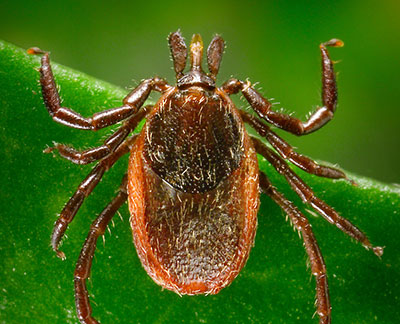Western Blacklegged Tick
(Ixodes pacificus)
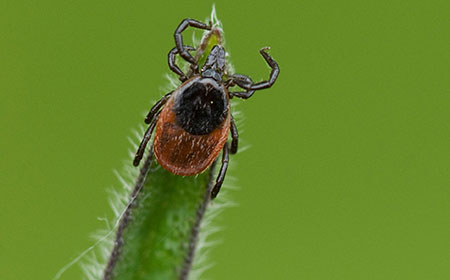
Similar to the deer tick, the western blacklegged tick is very small with a reddish color and narrow mouth parts. It can be identified by its lack of festoons around the abdomen.
Its habitat along the US West Coast distinguishes it from the deer tick, which is found in the eastern United States.
In its early stages, it consumes the blood of small animals such as lizards and birds. Adult females feed on larger animals such as humans, deer, dogs, and bears. Its life stages mirror those of the deer tick.
The Tick Research Lab of Pennsylvania is able to detect the most common tick-borne diseases in any of these species. Our tick DNA tests are over 99.9% accurate.
Details
Western Blacklegged Tick Habitat
The western black-legged tick (Ixodes pacificus) can be found all along the west coast of the United States in California, Oregon, and Washington.
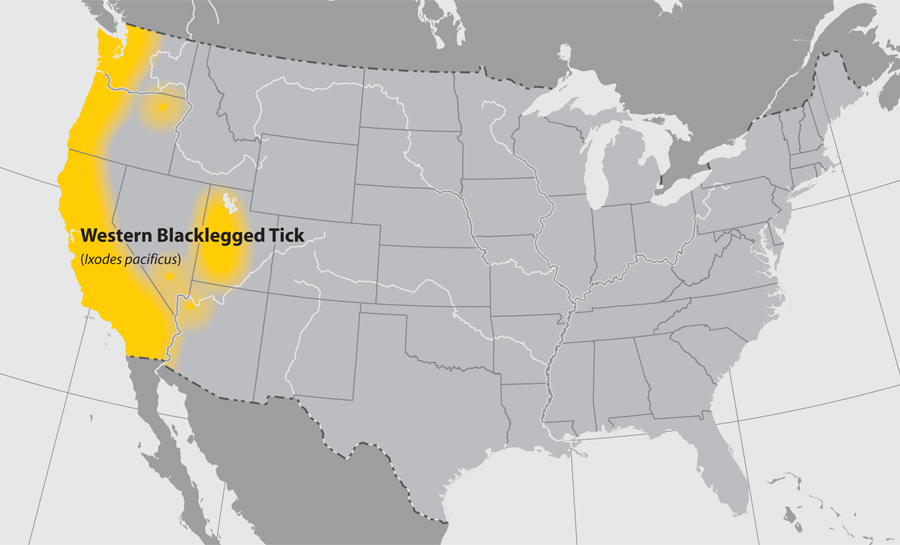
Western Blacklegged Tick Identification
They are small in size, and their physical features are very similar to the Eastern-blacklegged tick (deer tick). In comparison to the deer tick, the Western tick will have a more elongated body.
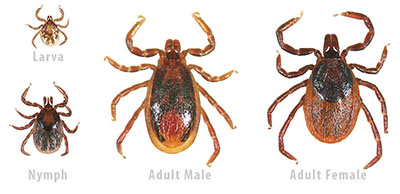
Western Blacklegged Tick Life Cycle
Just like the deer tick, the Western black legged tick has 3 life stages it will undergo over 2-3 years. Before molting to the next stage, the Western blacklegged tick must take a blood meal from a host.
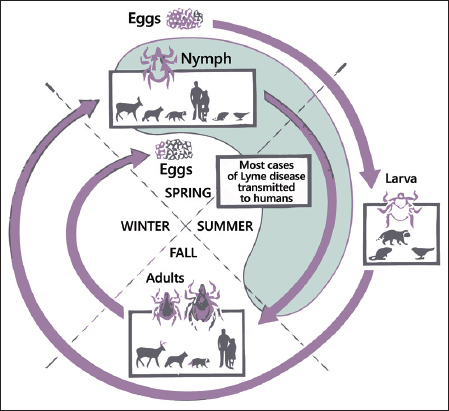
Blacklegged Ticks Carry Lyme and Other Diseases!
Western Blacklegged ticks are known to transmit Lyme disease, Babesiosis, Borrelia miyamotoi, and Anaplasmosis to humans.
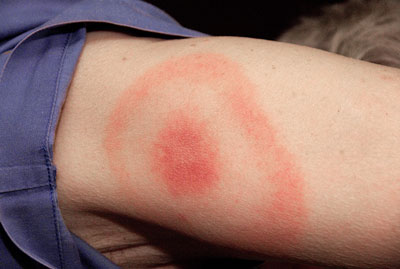
Western Blacklegged Tick Behavior
Nymph ticks are most active between May and August and adults are most active during the fall. The larvae and nymphs prefer to attach and feed on smaller animals, such as rodents and birds while adult ticks will attach and engorge onto larger animals such as domestic dogs, humans, and deer.
Nymphs can primarily be found under and around leaf litter and at the bottom of trees while adults will climb up tall grass and vegetation questing for a host.
